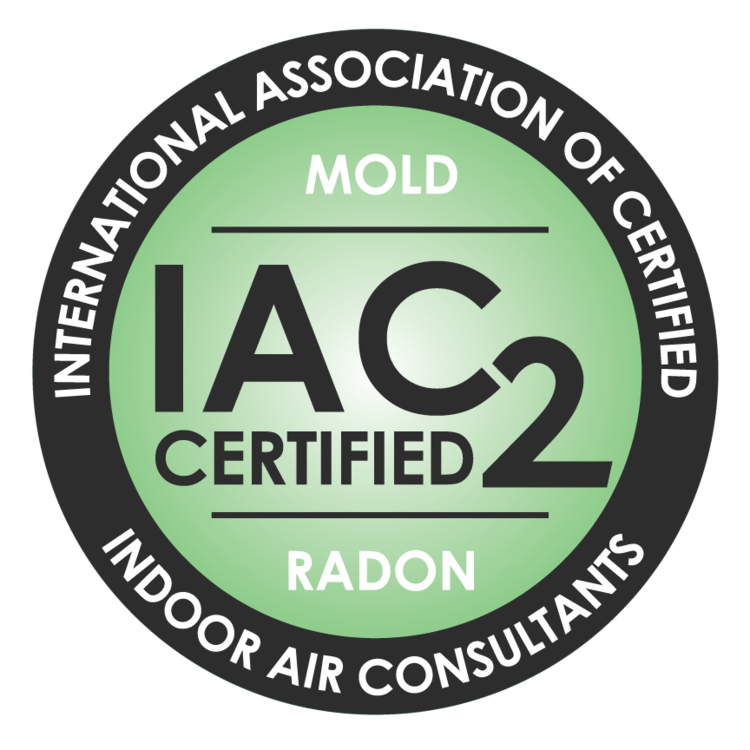Mold Testing
Your Local Air Quality Experts.
Mold is a fundamental part of the natural environment and is an important organism in our daily lives. Molds are part of the fungi kingdom, a diverse group of organisms within a wide range of species.
Mold’s primary function is to breakdown dead organic material and recycle nutrients back to the earth. In order for mold to grow, it must have an organic food source, a source of moisture, and the correct amount of humidity.
Common Types of Mold in Canada
Alternaria: One of the most common molds worldwide. This type of mold contains approximately 40 to 50 different species, of which only a few are typically found inside. This mold is common outdoors in soil, organic debris, foodstuffs, and textiles. When found indoors, they can typically be found in dust, carpets, and damp spots. Alternaria is commonly recognized and associated with Type I and Type III allergies, such as hay fever and asthma, and hypersensitivity pneumonitis, respectively.
Ascospores: This type of mold is common everywhere. It constitutes a large part of the airspora outside. It can reach very high numbers in the air outside during the spring and summer and can increase in numbers during and after rainfalls. Very few of this type of mold grow inside.
Aspergillus: This type of mold appears very similar to Penicillium (listed below), and they are commonly discussed as a group. These fungi are typically found in soil, compost piles, plant debris, and on water-damaged materials, as there are nearly 600 different species of Aspergillus. This type of mold is typically associated with hay fever, asthma, and other Type I allergies.
Basidiospores: This type of mold is common everywhere, especially in the late summer and fall. These spores are from mushrooms. Mushrooms are not normally found growing indoors, however, they can grow on wet lumber, especially in crawlspaces.
Botrytis: Botrytis is typically found in soil, or in fruits and vegetables that are in transport or storage. This type of mold is commonly referred to as “Gray Mold”, and may be found in on grapes, strawberries, lettuce, cabbage, and onions. Botrytis is known to cause allergies and induce asthma attacks.
Chaetomium: Chaetomium is common throughout the world. It contains nearly 100 different species, and is commonly found in soil, seeds, cellulose substrates, and woody and straw materials. The health risks of Chaetomium are not well studied.
Cladosporium: This mold is one of the most abundant spore types found in both indoor and outdoor samples, worldwide. It contains approximately 20 to 30 different species and is typically found in many different types of soil, plant pathogen, and leaf surfaces. It can also be found on many substrates, such as textiles, wood, and moist windowsills. Cladosporium is quite common and an important allergen.
Curvularia: This type of mold is commonly found everywhere outdoors, especially on soil and plant debris. It is capable of growing indoors on many cellulytic substrates like drywall and wood. Some possible allergens from this type of fungi are Type 1 (hay fever and asthma) and can be a common cause of allergenic sinusitis.
Hyphal Fragments: Hyphrae are the branching structure of fungi. When they are fragmented and without spore attached, it is impossible to determine the genus or group of the fungi, so they are reported as hyphal fragments.
Mucor: Mucor is able to contaminate many kinds of stored food products, as it is one of the quicker invading organisms. This type of mold is found throughout the world, typically in hay, stored seeds, horse manure, and house dust. Mucor typically poses a minor health risk.
Penicillium: Penicillium is a group (Genus) of moulds found everywhere world-wide. It is the mould that saved millions of lives by producing the first ever known modern antibiotic, the penicillin. Penicillium causes food spoilage, colonizes leather objects and is an indicator organism for dampness indoors. Some species are known to produce toxic compounds (mycotoxins). The spores can trigger allergic reactions in individuals sensitive to mould. Therefore, the health of occupants may be adversely affected in an environment that has an amplification of Penicillium. About 200 species of Penicillium have been described. They are commonly called the blue or green moulds because they produce enormous quantities of greenish, bluish or yellowish spores which give them their characteristic colours.
Stachybotrys: This mold is ubiquitous in nature and contains approximately 15 different types of species. It produces wet, slimy spores, and is found in soil, decaying plant substrates, decomposing cellulose, leaf litter, and seeds. This type of mold is dark in colour, and it excels in water damaged, cellulose rich materials, like drywall, paper, and ceiling tiles. Commonly reported respiratory tract symptoms include nasal irritation, burning and congestion, cough, wheezing, chest tightness and dyspnea.

How are we different?
Why should you go with us?
- IAC2 Certified
- WCB Insured
- $5M General Liability
- Member of InterNACHI
- 5 Star Rating on Google
Let's Chat
Have questions? We can help!
Questions? Give us a call!
We're ready to help!
Give us a call! We will take the time to discuss any questions and/or concerns you may have, and provide options and advice.
